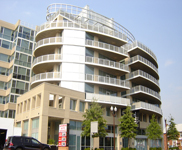|
|
11140 Rockville Pike
#480 |
    
|
|
|
|
All real estate decisions must have three feasibility tests to ensure the positive outcome. Market analysis is the process of determining whether the market will support a particular use at a particular site so that is profitable.
1) Market Feasibility, Does the forecasted supply and demand relationship for the property in the selected location indicate success?
2) Location and Site Feasibility, Will the location and site support the project adequately?
3) Financial Feasibility, Does the projected financial picture indicate sufficient profit with the risk?
Market Feasibility is the process for identifying Demand, Supply and Capital and Political conditions faced by the type of real estate in a selected region.
In market analysis, a common way to uncover commercial real estate potential opportunities is to look for gaps. A gap exists when demand exceeds supply. When demand equals the supply, the vacancy rate equals zero. When supply greatly exceeds demand it’s considered over supply.
Most real estate economist use employments as the primary predictor of real estate demand. Basic employment includes all the activities that produce more good and services than can be consumed in local area. Total basic employment is a total of basic employment for all industries. EBM, Economic base multiplier is the ratio of total employment to basic employment in each industry. Total future employment can be obtained through multiplying EBM, economic base multiplier by basic employment.
The supply of commercial real estate is the total amount of inventory for property type. Pipeline is new inventory of that is process of being added to the market. Forecast total supply inventory in an area is all the existing space that is vacant , occupied, built, forecasted or demolished for a particular area for specific time period. Vacancy measures the intraction of supply and demand. Absorption is the amount of inventory that becomes occupied during specific time period.
Location/ site feasibility can be categorized to two classifications, site selection and best and highest use. Site selections asks the question,” what is the best site for the specific use?” and best and highest use asks the question, “what is the best use for the site?”
A real estate location / site analysis addresses two essential questions, “is the proposed development possible and is it practical?” In another words, is the intended use both technically and physically feasible?
Site analysis focuses more on technical feasibility and identifies if the location/ site is possible. Some technical components are physical limitation (site size and shape, natural features), regulatory requirements (zoning, future land use) and environmental concerns (hazards materials, federal laws)
Location analysis focuses more on functional feasibility and identifies if the location is practical. Some functional characteristics include demographics (make up of costumer base by age, income), accessibility and linkages (proximity to customer base, suppliers), traffic generators (other outlets to attraction that will cratepatronage), competition (direct and indirect)
Financial feasibility is a price that allows a reasonable profit commensurate with the risk involved. Financial feasibility also means keeping the occupancy cost at a level commensurate with user’s budget requirements. The proposed new location can be financially feasible if, the occupancy cost does not exceed the maximum acceptable percentage of expected sales estimate by the retailer.
An investor seeking to purchase income producing real estate is faced with establishing several budgets, each of which must track the potential impact of future market conditions. One, purchase budget includes considerations of purchase price, loans, points, closing, recordation’s fees, legal costs, appraisals, surveys, environmental and property inspections. Two, holding period, the operating money budget includes analysis and future estimate of the items outlined on annual property operating data. APOD. Third, disposition, the sales proceeds budget estimates items such as the possible future sales price, commissions to be paid, loan payoffs requirements and penalties, closing costs to be paid by seller and legal costs.
One way to accomplish the financial analysis is to calculate the internal rate of return (IRR) of expected cash flows and sales proceeds after tax over the investments projected holding period and compare it with investor’s desired yield. Alternatively, the investor can use net present value analysis to discount future cash flows at the desired rate to present value that can be compared purchase costs involved.
| ||
|
GamzehRealty |
All Tenants
The information on this website has been secured from sources we believe to be reliable, but we make no representation or warranties, expressed or implied to the accuracy of the information. Buyer must verify the information and bears all the risk for any inaccuracies. Photos are the copyrights of their rightful owners. The real estate listings on the website are provided by MRIS and from various brokers who participate in IDX.
© Copyright commercialaddresses.com, 2010. All Rights Reserved.

